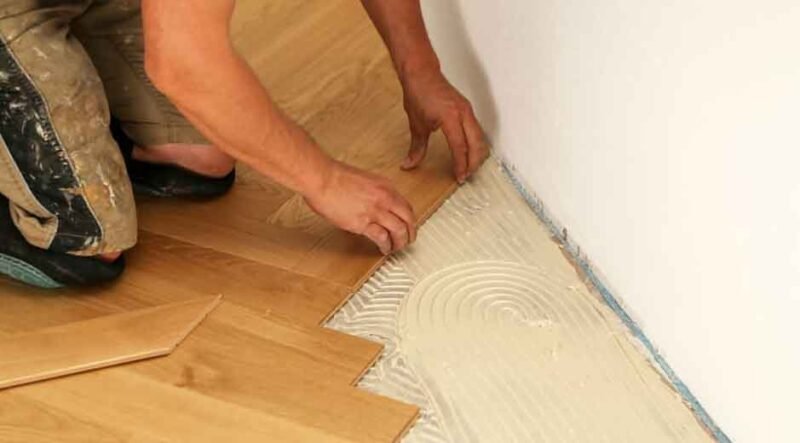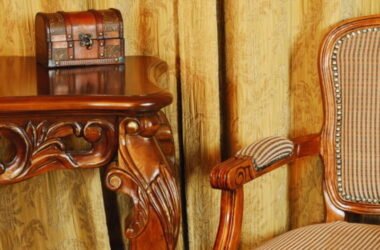Squeaky wooden floors are a familiar feature in many homes. A creak in the hallway, a groan under the dining table, a sound that becomes part of the house’s character. But beneath that character often lies a more practical concern. Squeaking isn’t just a harmless quirk—it’s often a signal that something within your flooring system isn’t working as it should.
Over time, the movement and friction that cause those sounds can lead to larger problems. Boards loosen, gaps appear, and subfloors shift. What begins as a minor annoyance can gradually evolve into something far more expensive to fix. That’s why dealing with squeaky floors early is more than just about silence—it’s about structure and long-term value.
Why Floors Start to Squeak
Wood floors are built from layered systems—boards, subfloors, and joists—all of which expand, contract, and flex as your home ages. The most common reason for squeaks is movement between these layers. Floorboards rub against each other, nails shift in their sockets, or joists begin to dip unevenly with time and pressure.
This kind of friction, especially if caused by improper installation or environmental changes like seasonal humidity, can occur even in newer properties. In older homes, the issue is more common as materials dry out, settle, or were never optimally secured in the first place.
Each squeak has a cause, and the longer it’s ignored, the more likely it is to affect surrounding areas. A single loose board becomes a chain reaction of instability. Early intervention can often stop that chain before it grows.
When a Sound Signals Something Deeper
Many people live with creaky floors for years without seeing any major consequences. But in other cases, that soft noise underfoot is the first sign of broader wear. Floorboards that shift or flex too much can start to pull away from fixings, leading to wider gaps, moisture intrusion, or finish cracking. These problems, once visible, are harder and costlier to reverse.
In some situations, squeaks also point to foundational issues. For example, if joists are sagging or undersupported, even the best floorboards will creak as they try to compensate. Without inspection, it’s difficult to know whether the problem is surface-level or structural—which is why expert evaluation matters.
For many homeowners, the real turning point isn’t damage—it’s frustration. A floor that squeaks every time someone moves through a room can disturb sleep, create awkward interruptions, and detract from the comfort of the space.
The Pitfalls of DIY “Fixes”
With dozens of online tutorials offering home remedies for squeaky floors, it’s tempting to try and patch things yourself. But sprinkling talcum powder or driving in an extra screw doesn’t address the underlying problem. Worse, it can sometimes cause new issues—especially if pipes, cables, or underfloor heating lie just beneath the boards.
Quick fixes often mask rather than resolve the problem. You may quiet one area, only to have another begin squeaking shortly after. Without knowing what’s happening below the surface, you’re working blind.
Professional repair doesn’t rely on guesswork. It starts with understanding the anatomy of your floor—how it’s layered, how it’s reacting to pressure, and what each part is doing under stress. That knowledge is what makes the repair effective and lasting.
A Proper Repair Approach
Solving squeaky floors requires more than just a toolkit—it requires insight. A professional technician begins by assessing not only the surface boards, but also the subfloor condition, the placement of joists, and the methods used during installation. Each of these components influences how the floor moves and where noise originates.
Once identified, the repair may involve re-securing loose sections, reinforcing weak points from below, or adjusting how pressure is distributed across the surface. In some cases, especially in older homes, it’s necessary to replace worn fixings or fill subfloor gaps with modern adhesives designed to eliminate friction.
The difference between a good repair and a great one lies in precision. A trusted technician doesn’t just remove the noise—they strengthen the floor for future use, preserving both its functionality and its appearance.
When to Take Action
Not every squeak requires urgent attention. But if your floor has started creaking more loudly, if multiple areas are now affected, or if the noise is accompanied by other issues—such as shifting boards, visible gaps, or uneven surfaces—it’s time to act.
Even if the squeak is currently minor, catching the issue early ensures that your floor remains solid and stable. It also prevents wear from accelerating or spreading, which can affect not only comfort but also resale value.
For homeowners planning a renovation, floor refinishing, or property sale, addressing squeaks before they become visible problems is a smart move. A silent floor is not only more pleasant to live with—it reflects care, quality, and attention to detail.
Why Homeowners Choose FloorOx
At FloorOx, we treat every floor as part of the home’s foundation—both physically and aesthetically. Our work goes beyond patching surface problems. We look beneath the boards to understand what’s really causing the squeak, and we offer solutions tailored to your floor type, property age, and finish.
Clients choose to hire FloorOx because we approach each job with precision and respect. Whether the flooring is pine, oak, parquet, or engineered, we’ve worked with it—and we know how to silence it without compromising its beauty.
We use tools and methods that protect your home from dust and disruption, and we always prioritise long-term stability over temporary results. Our team takes pride in leaving behind a floor that not only looks better but feels more solid underfoot.
From period properties to new builds, our squeaky floor repair services are trusted by homeowners who care about craftsmanship and peace of mind. If you’re ready to restore quiet to your space, now is the time to hire FloorOx.








